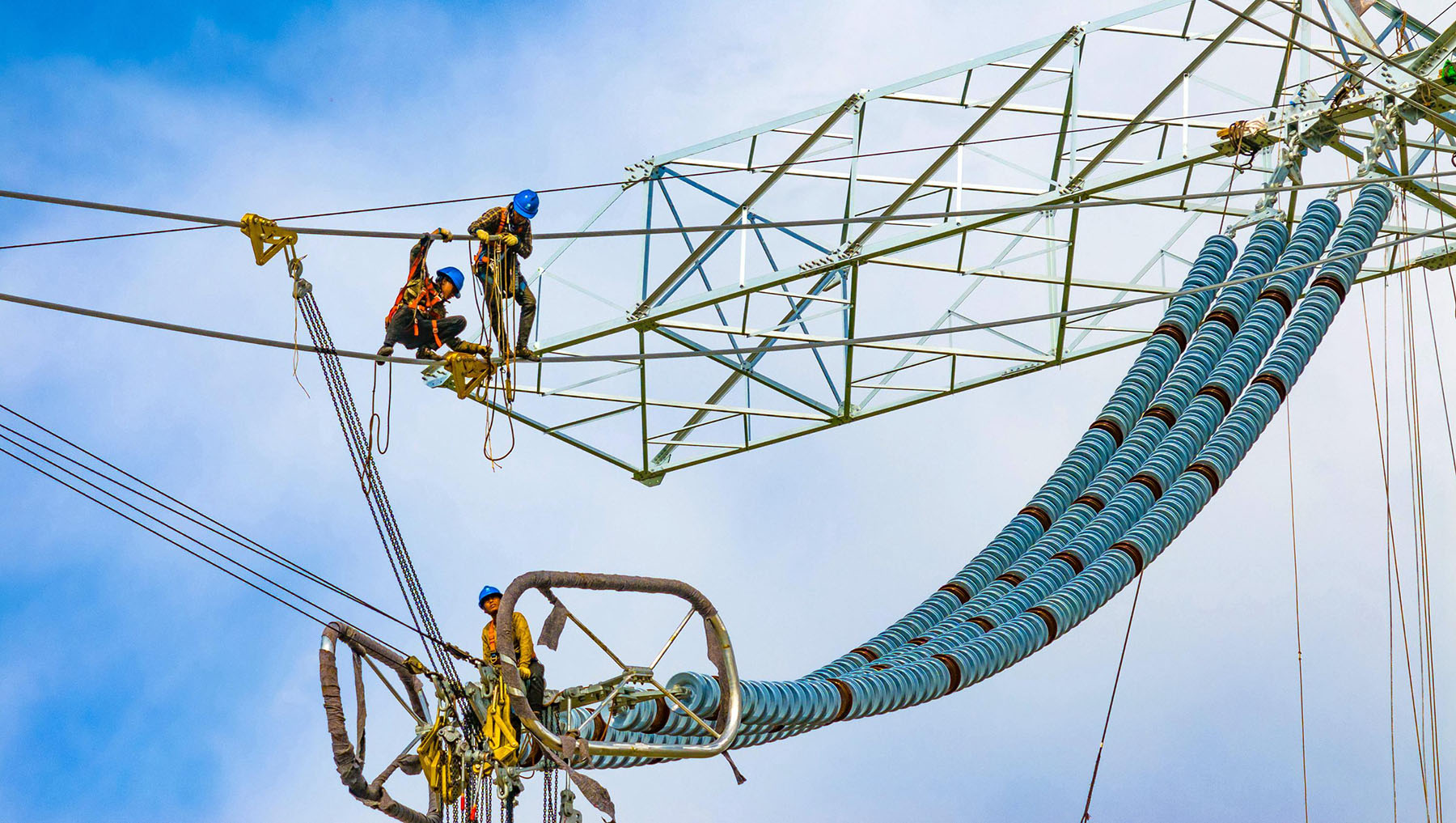
The construction of new energy projects in China for grid connections and transmission continues to strengthen, further enhancing the industry's capabilities to optimize large-scale resources, a report released on Thursday said.
China has set up a batch of intraprovincial and inter-provincial transmission projects last year. By the end of 2023, there were 39 ultra-high-voltage transmission projects. National transmission capacity exceeded 300 million kilowatts, further enhancing new energy consumption capacity, according to a report on China's new energy power generation published by the State Grid Energy Research Institute in Beijing.
READ MORE: Green power certificates set record
Companies are also accelerating investment in grid construction to guarantee sufficient energy supply, and increasing the share of green power in the country's energy mix, said Ye Xiaoning, senior engineer from the new energy department of the institute.
For instance, State Grid Corp of China, the largest power provider in the country, plans to invest more than 500 billion yuan ($69.6 billion) in grid network construction this year, focusing on construction of ultra-high-voltage power transmission projects, to ensure power supply stability and boost green power consumption.
The company also said it will continue to step up construction of clean energy power transmission projects and intelligent power distribution systems, and sharpen focus on aspects like new energy storage regulation and vehicle network interaction.
Kou Nannan, head of China Research at BloombergNEF, an industry research provider, said most new energy sources are intermittent and are characterized by rapid and unpredictable variations, which complicates the task of maintaining stable power generation and poses a risk to the consistent operation of the grid.
Kou emphasized that investment in infrastructure, including grid upgrades and expansion, as well as the development of energy storage systems, will be crucial in accelerating China's transition to green and low-carbon energy in the coming years.
Zhu Yicong, senior analyst of renewables and power research at global consultancy Rystad Energy, said China's renewable installations have surged since 2023, while 82 GW of new installations have been connected to the grid during the first five months of this year.
This necessitates speedy construction of related transmission networks, improvement to grid systems' capability to take in more renewable power and accelerated development of energy storage, she said.
Accelerating the construction of grid network projects, including cross-province transmission lines and ultra-high voltage transmission lines will help improve consumption of power generated from large-scale renewable base projects and ease the power imbalance between resource-rich areas and high power demand areas, she said.
Global consultancy Accenture said in a report that for the largely unchanged power distribution industry, this transition means fundamental transformation. Increased investment in the grid network will enhance transmission channel use and boost investor confidence in wind and solar projects.
According to the China Electric Power Development 2024 report released by the China Electric Power Planning and Engineering Institute recently, China's electricity demand has been steadily climbing in recent years, with the flexibility of the power system continuously improving, which has further facilitated the world's largest renewable power generation system.
With China's new energy sector entering a new phase of rapid growth, resulting in increasing pressure on energy consumption, the institute underscored more efforts to ensure the reasonable consumption and utilization of new energy by better predicting the demand for regulatory capacity and optimizing the coordination of power generation, grid, load and storage.
By 2025, the coordinated development of regulatory capacity across power generation, grid, load and storage is expected to increase the maximum adjustable capacity by about 300 million kilowatts, said Rao Jianye, president of the China Electric Power Planning and Engineering Institute.
China's capacity for innovation in energy technology has consistently advanced over the past few years, with accelerated upgrades in technologies related to high-capacity offshore wind turbines, tidal energy generation and crystalline silicon photovoltaic technology, he said.
The institute recommended better coordination of the layout of various types of power sources in the next three years, including conventional hydropower, pumped storage, wind power, solar power generation, nuclear power and coal-fired power, to contribute to China's green and low-carbon development as well as global emissions reduction.
ALSO READ: China powers region's renewable energy
According to the State Grid Energy Research Institute, China's installed capacity of distributed photovoltaic systems has surpassed 200 million kilowatts. In 2023, China added 85.89 million kilowatts of new distributed PV generation capacity, accounting for nearly 40 percent (39.6 percent) of the total new PV installations.
By the end of 2023, the installed capacity of distributed PV systems reached 240 million kilowatts, reflecting a year-on-year growth of 54 percent and representing 40 percent of the total PV capacity.
Residential PV systems continued to play a significant role in the development of distributed PV, with 43.48 million kilowatts of new residential distributed PV capacity installed, making up 50.6 percent of all new distributed PV installations, it said.


